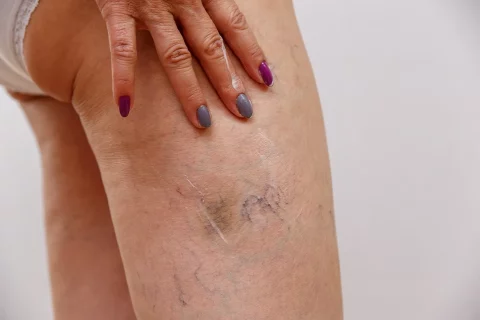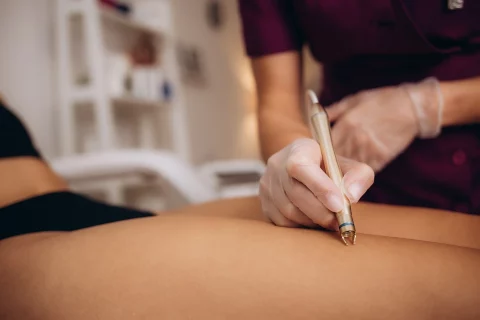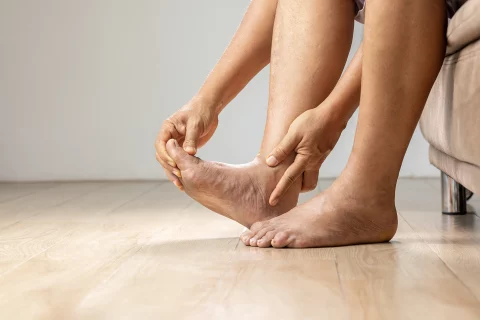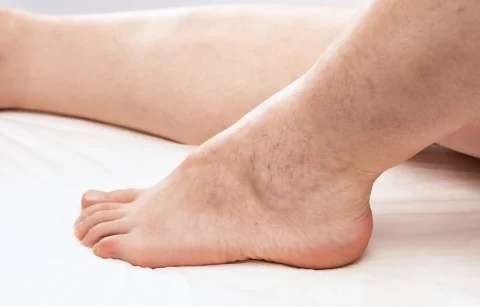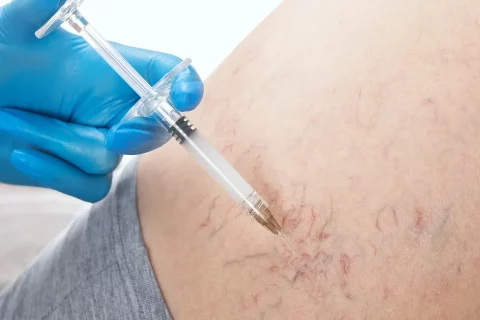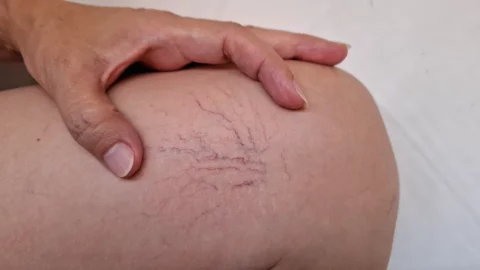How Long Women Should Wait to Treat Veins
You might feel like your legs have become a roadmap, with tiny red and blue lines snaking all over them. It’s not uncommon for spider veins to make an unwelcome appearance during pregnancy, leaving you feeling less than thrilled about showing off your legs post-baby.
As a new mom, the last thing you want is another concern on top of taking care of your little one. But when it comes to addressing those unsightly spider veins, timing matters.
In this article, we’ll discuss the causes of these pesky intruders during pregnancy, when it’s safe to seek treatment after giving birth, and what types of treatment options are available for you.
We’ll also walk you through what to expect during the procedure itself and offer tips on post-treatment care and prevention strategies so that you can confidently flaunt those fabulous legs once again!
Causes of Spider Veins During Pregnancy
So, you’re wondering about the causes of spider veins during pregnancy? It’s a common concern for many expecting mothers.
The primary reason behind their appearance is due to hormonal changes and weight gain experienced during this time. As your body adjusts to support your growing baby, increased levels of hormones like estrogen and progesterone cause blood vessels to dilate and weaken, making it easier for spider veins to form.
Additionally, the extra weight you gain while pregnant puts more pressure on your leg veins, forcing them to work harder in order to pump blood back up towards the heart. This increased pressure can lead to the formation of both spider veins and varicose veins.
Rest assured that these pesky little lines are generally harmless; however, it’s always wise to consult with a vein specialist if you have concerns or experience any discomfort related to their presence.
When It’s Safe to Get Treatment
Navigating the postpartum recovery timeline can be challenging, especially when dealing with spider veins.
It’s essential to consult with a medical professional who has expertise in vein treatments and understands post-pregnancy conditions before deciding on the best time for treatment.
They’ll take into account your unique situation and guide you through the process, making sure you receive safe and effective care for your spider veins.
Postpartum Recovery Timeline
Imagine your body as a roadmap, with spider veins being the temporary detours during pregnancy. Once you’ve reached that postpartum recovery milestone at around 6 weeks, it’s usually safe to explore treatment options for those pesky spider veins.
Keep in mind that your body has gone through significant changes and needs time to heal both physically and emotionally. As you gradually incorporate postpartum exercise into your routine and focus on emotional recovery, getting rid of those spider veins can help boost your confidence as you transition into this new phase of life.
During the postpartum period, there are several factors to consider when determining if it’s the right time to treat spider veins:
- Individual healing process: Every woman’s body recovers at a different pace after giving birth. It’s important to listen to your own body and consult with a healthcare professional before proceeding with any treatments.
- Breastfeeding: If you’re breastfeeding, some vein treatments may not be recommended due to potential side effects or complications. Always discuss this aspect with a vein specialist beforehand.
- Hormonal fluctuations: Pregnancy hormones can contribute to the development of spider veins. As these hormones subside over time, some minor spider veins may fade on their own without treatment.
- Type of treatment: There are various methods available for treating spider veins – from minimally invasive procedures like sclerotherapy and laser therapy to more advanced surgical techniques. Consult with an expert in vein treatments who will guide you towards the most appropriate option based on your individual condition.
By considering these factors and working closely with an experienced medical professional who specializes in vein treatments, you’ll be well on your way towards improving not only the appearance but also the overall health of your legs after pregnancy.
Consultation with a Medical Professional
Consulting with a medical professional is crucial in determining the most suitable course of action for addressing those pesky, unwanted veins that may have developed during pregnancy.
Medical misconceptions can sometimes lead to inappropriate self-treatment methods or delays in seeking professional guidance.
A healthcare provider with expertise in vein treatments will assess your specific condition and recommend the best approach to treat your spider veins, taking into consideration factors such as the severity of your vein issues, overall health, and post-pregnancy recovery timeline.
During your consultation, it’s essential to be open about your concerns and expectations so that the healthcare provider can provide personalized advice based on their knowledge of post-pregnancy conditions and understanding of medical procedures.
They will likely discuss various treatment options available for spider veins – from conservative approaches like compression stockings to minimally invasive procedures like sclerotherapy or laser treatments.
Remember, consulting with a medical professional ensures you receive accurate information and tailored recommendations that prioritize both the safety and effectiveness of treating spider veins after pregnancy.
Types of Treatment for Spider Veins

Sclerotherapy, laser therapy, and radiofrequency ablation are all available treatments to tackle those troubling spider veins post-pregnancy. Sclerotherapy options involve injecting a solution directly into the affected veins, causing them to collapse and gradually fade away.
This procedure is often considered the gold standard for treating small to medium-sized spider veins and usually requires multiple sessions for optimal results.
On the other hand, laser therapy uses focused light energy to target and destroy the problematic veins without any injections or incisions. This non-invasive treatment option may be more appealing if you’re hesitant about needles or have a lower pain tolerance.
When deciding on which treatment type is best for you, it’s essential to consider factors like your individual vein condition, your overall health status, and your personal preferences. Radiofrequency ablation is another minimally invasive procedure that uses heat generated by radiofrequency energy to close off faulty veins.
Although this technique is primarily used for larger varicose veins rather than spider veins, it might be an option worth discussing with your healthcare provider if you have both types of vein problems post-pregnancy.
Ultimately, consulting with a vein specialist will help determine the most effective treatment plan tailored specifically to your needs as you navigate through this journey towards healthier-looking legs after childbirth.
What to Expect During Treatment
Treatment duration for spider veins varies depending on the severity of your condition and the chosen method of treatment. Sclerotherapy, one of the most common treatments for spider veins, typically takes about 15-30 minutes per session.
However, multiple sessions may be needed to achieve optimal results. On the other hand, laser therapy sessions usually last between 15-20 minutes but can require several treatments as well.
During these procedures, pain management is a top priority – after all, we want you feeling comfortable throughout your treatment journey!
For sclerotherapy, a tiny needle is used to inject a solution into your affected veins which may cause some mild discomfort. You might also experience minor itching or burning sensations at the injection sites post-treatment; however, this is generally short-lived.
Laser therapy involves applying light energy that heats up and damages targeted blood vessels without breaking your skin surface. While this procedure may cause minimal pain akin to snapping rubber bands against your skin or a brief sensation of heat, cooling devices are often utilized during laser therapy sessions to minimize any discomfort you may feel.
Don’t worry – with proper pain management in place during these treatments, you’ll soon be on your way to flaunting those beautiful legs again!
Post-Treatment Care and Prevention
Now that you’ve got a better understanding of what to expect during spider vein treatment, it’s crucial to learn about post-treatment care and prevention. Proper aftercare not only aids the healing process but also helps prevent the recurrence of spider veins in the future.
After your treatment, your doctor may recommend post-treatment exercises like walking or calf raises to promote blood circulation and reduce swelling. Compression stockings can also be recommended for a period of time to help maintain proper blood flow in your legs.
There are several prevention techniques you can adopt such as maintaining a healthy weight, avoiding standing or sitting for long periods, elevating your legs when resting, and engaging in regular physical activity to improve overall leg strength and circulation.
Remember that taking good care of yourself is vital for preventing spider veins from reappearing after pregnancy.
FAQ: Is It Bad To Wear Short Dresses When I Have Spider Veins?
Should I avoid wearing short dresses if I have spider veins?
Not necessarily. While covering spider veins may make some people feel more comfortable, wearing shorts dresses will not worsen or cause spider vein damage.
Spider veins are primarily caused by a variety of factors including pregnancy, family history, deep vein thrombosis, varicose veins, vein disease, hormonal changes and age. Clothing choices alone do not cause or remedy spider veins.
Are darker colored dresses better to hide spider veins?
Darker colors like black, navy and forest green can help make spider veins less noticeable. However, lighter colors will not damage or worsen spider veins.
Clothing color is a matter of personal preference for concealing spider veins, but will not medically impact their appearance or severity.
Should I see a vein specialist for advice on wardrobe choices?
Seeking advice from a vein specialist or vein doctor regarding clothing choices is not medically necessary. Vein specialists focus on treating the underlying vein disease and varicose veins causing spider veins.
Wardrobe choices will not impact treatment plans or options. However, some physicians may provide general lifestyle tips for managing and concealing spider veins.
Do compression stockings help reduce the appearance of spider veins?
Yes, compression stockings can help reduce the appearance of spider veins over time. Compression stockings help improve circulation in the legs, reduce inflammation in veins and provide pressure to collapsed or damaged veins.
All of these benefits can decrease the prominence of spider veins, especially when standing or sitting for prolonged periods.
Should I avoid high heels if I have spider veins?
High heels alone do not cause spider veins but can aggravate their appearance over time. High heels reduce calf muscle pump action which helps circulate blood back to the heart. This can lead to blood pooling in the lower legs and feet, causing veins to dilate and spider veins to become more prominent.
For most women, wearing high heels in moderation will not significantly impact spider veins. However, those with underlying vein disease or at high risk of varicose veins may want to limit high heel use when possible.
Conclusion

So, say so long to spider veins soon! You’ve successfully sailed through pregnancy and now it’s time to tackle those pesky post-pregnancy problems.
Trust in tried-and-true treatments and seek the support of a skilled specialist who understands the unique needs of new moms.
Remember, recovery requires patience and persistence. Focus on following your doctor’s advice for post-treatment care and prevention to ensure enduring effects.
Embrace this exciting era with confidence, knowing you’re well-equipped to conquer any challenge that comes your way!


